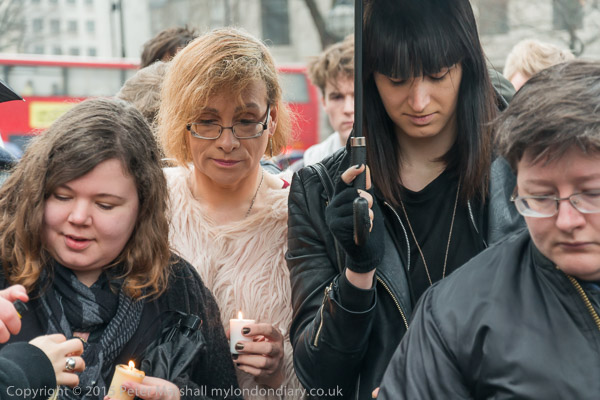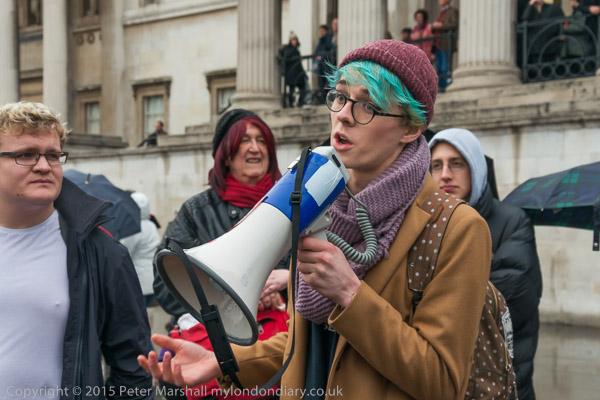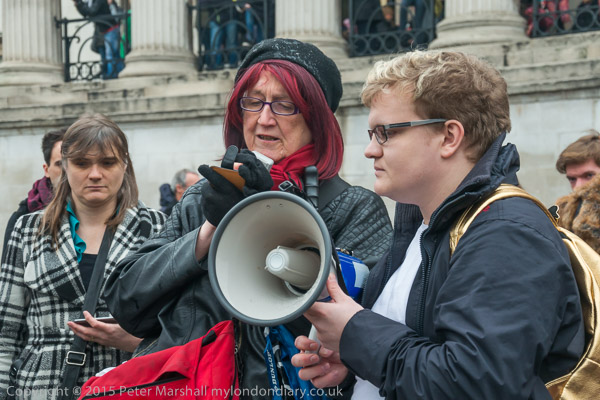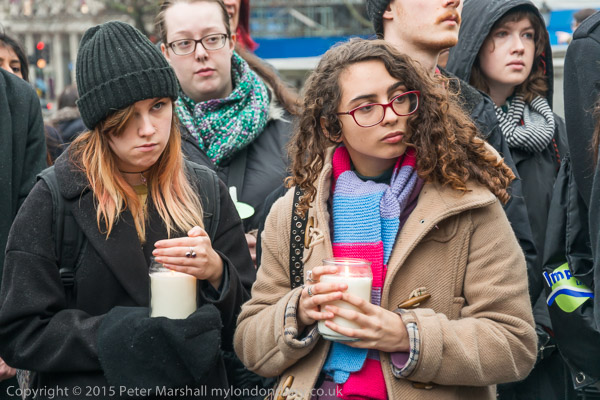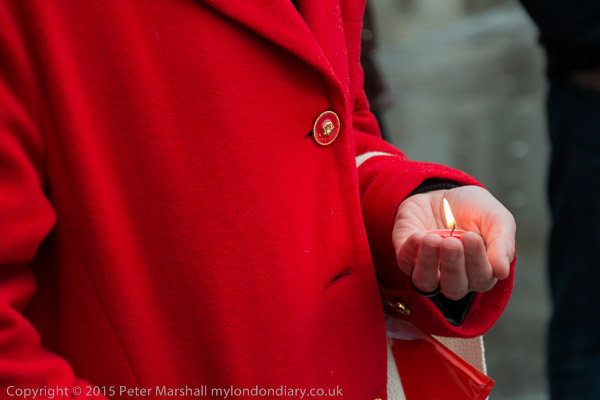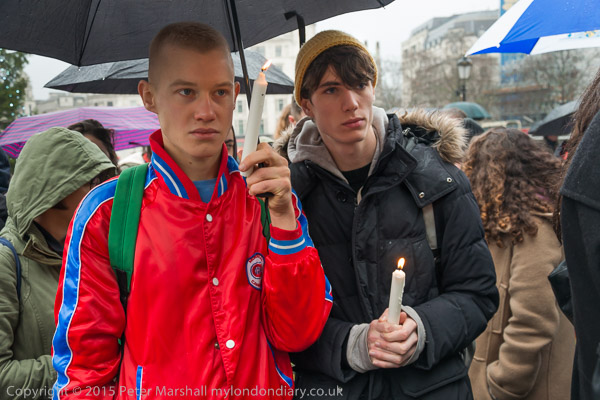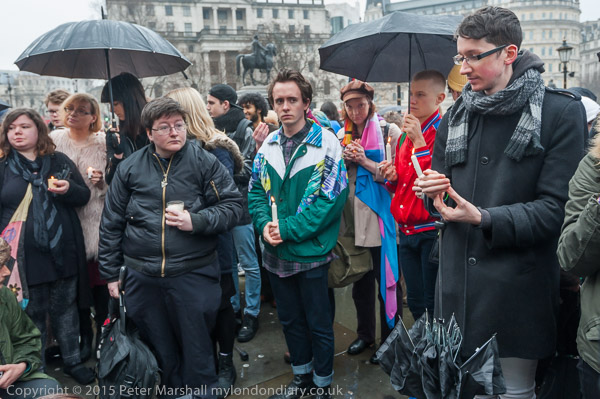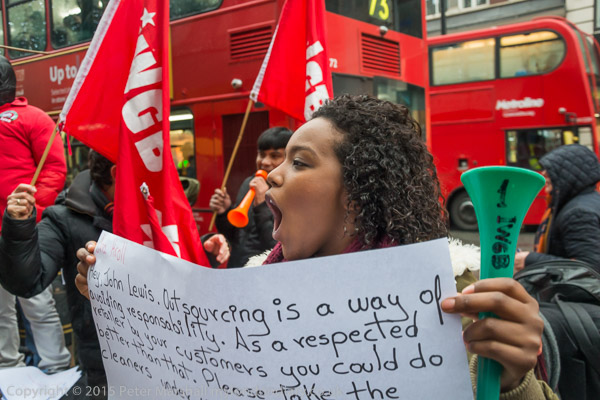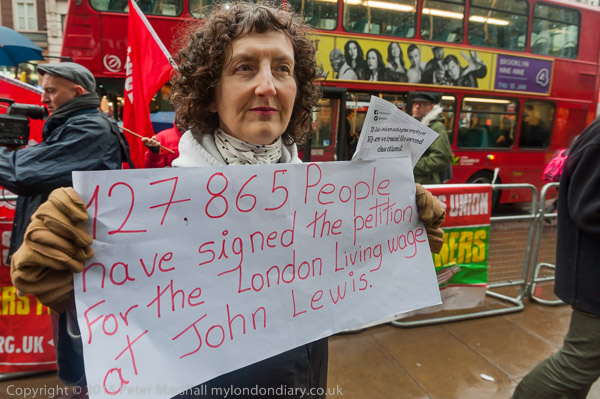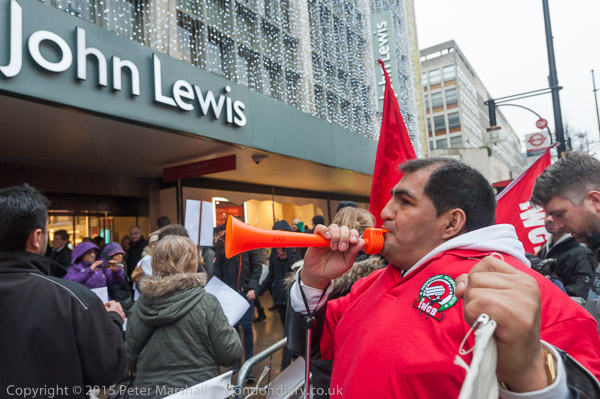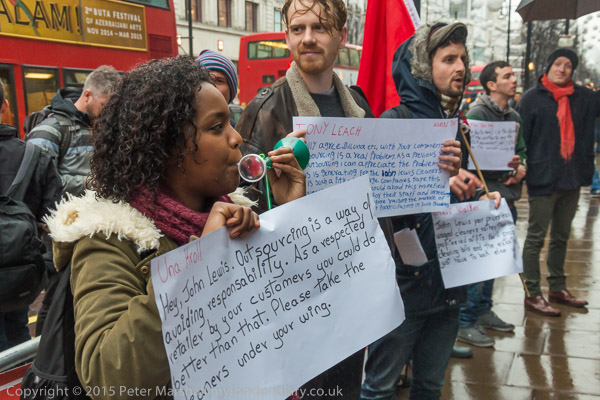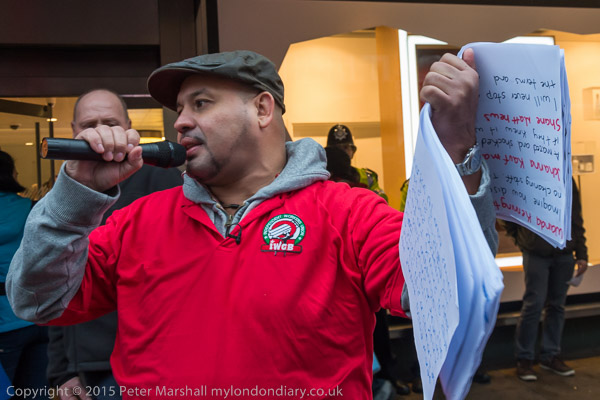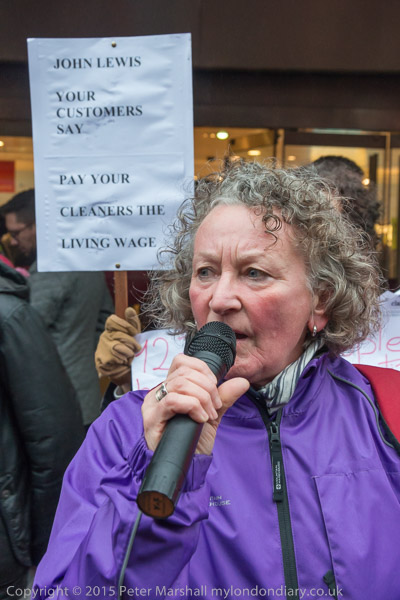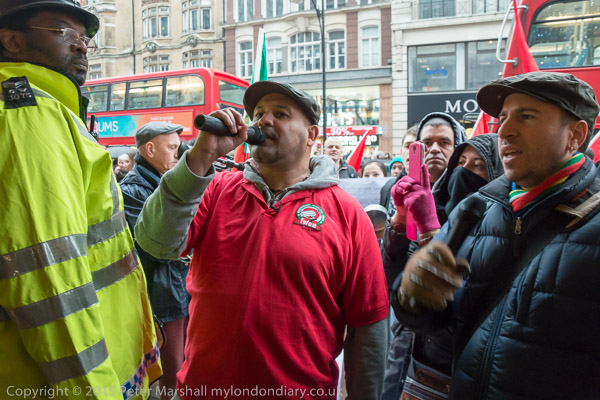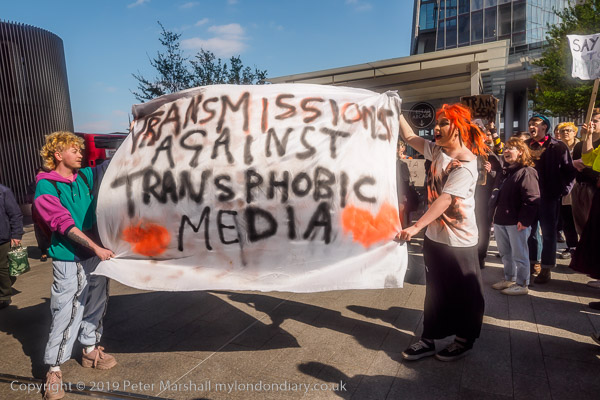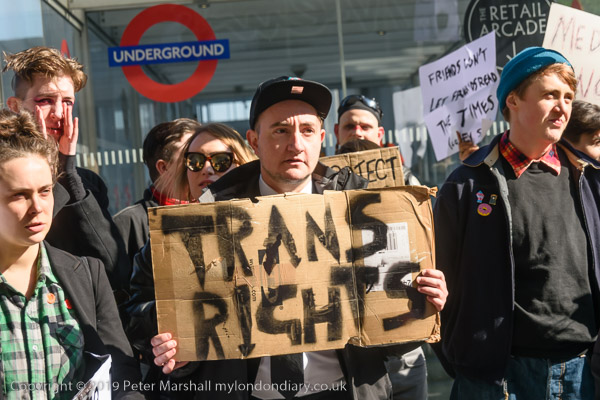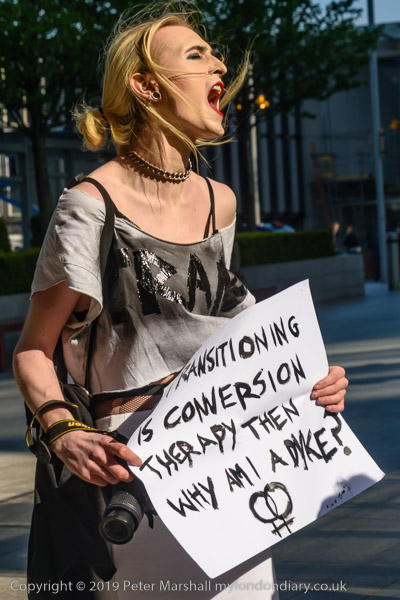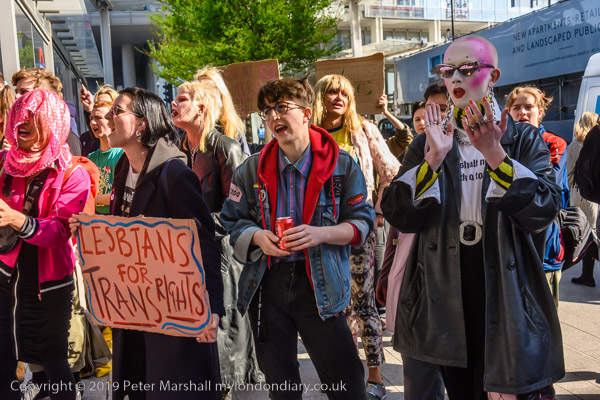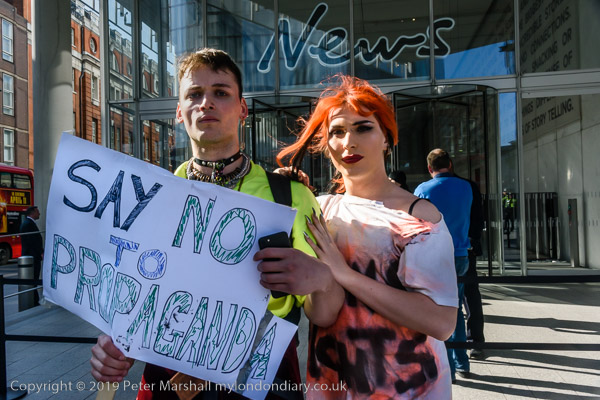Rain on Pride Parade: Times have changed since 2014 when I made a large set of pictures at the start of London’s annual Gay Pride on Saturday 28 June. Back in 2014 I was able to walk around freely and meet and photograph those taking part before the parade started. The colour pictures here are all from that event, where there were some short but heavy showers as people gathered.
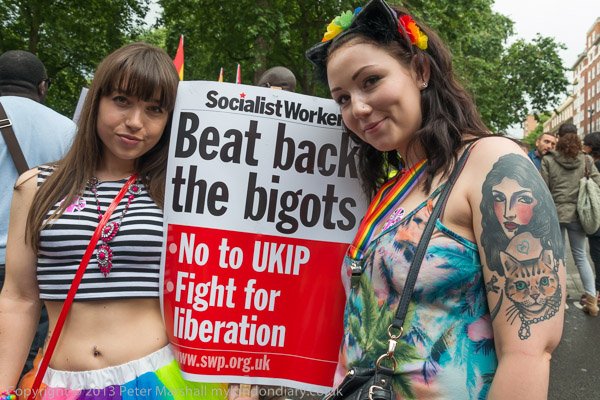
I don’t think I had actually bothered to apply for accreditation, though I did on some previous years, as I didn’t intend to photograph the actual parade. But in 2017 security around the event was stepped up and it became necessary for everyone to have applied for permission to take part to get near.
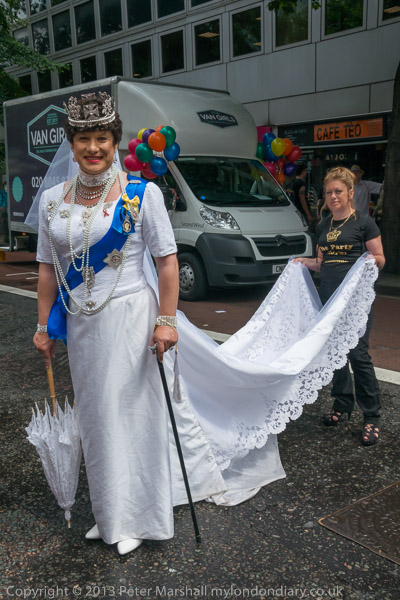
I’d first photographed Pride in 1993 and it was then a very different event. Pride was then a protest and a defiant gesture, while now it has become a corporate-dominated gay parade.
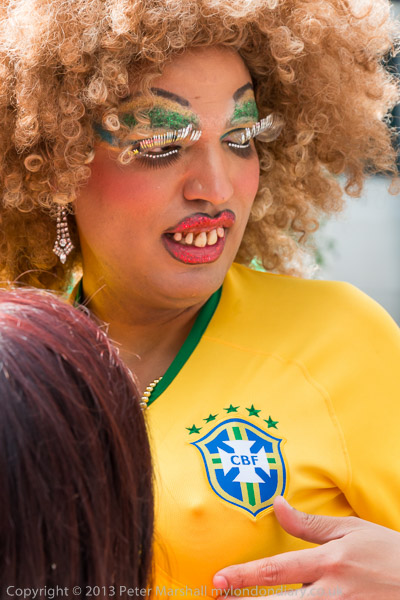
I was pleased when some of these photographs were shown as a part of the exhibition Queer is Here at the Museum of London in 2006 and a larger set at at ‘Changing the World’, a Gay and Lesbian History and Archives Conference at London Metropolitan Archives in 2005.
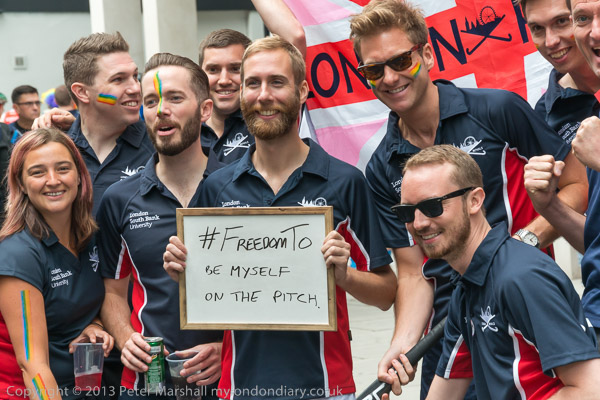
Those pictures were in black and white, though I think I may also have taken some in colour, yet to be re-discovered in my archives, and they covered the 10 years from 1993-2002. You can view a set on-line, though there are hundreds more in my files. These include a small number from Pride 1998, which according to Wikipedia didn’t happen.
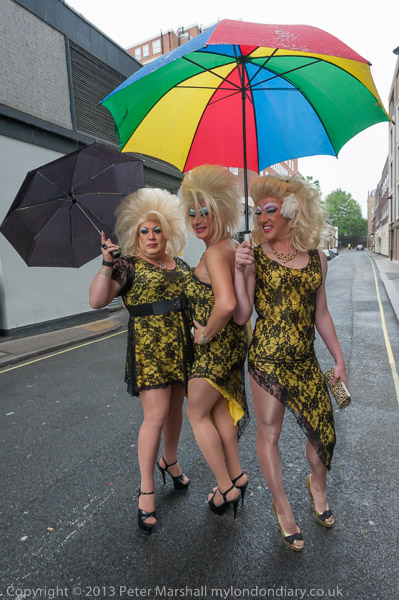
In 2017 I had decided to photograph the Migrants Rights and Anti-Racist Bloc who had joined the official parade in 2016. But in 2017 they were refused entry and instead – as I put it – “reclaimed Pride as protest, gate-crashing the route at Oxford Circus and marching in front of the official parade along the route lined by cheering crowds.”
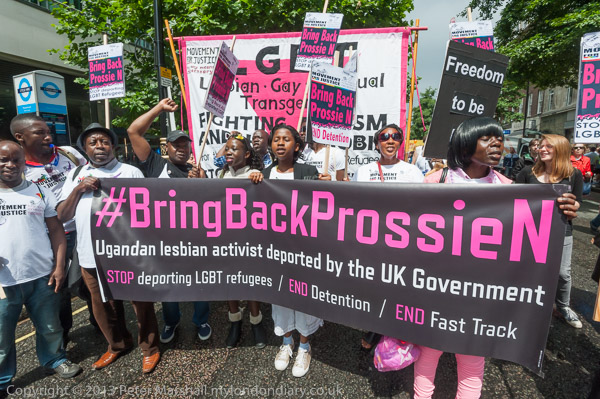
This should have been the big story about that day’s Pride, but hardly made the news, and I think was totally ignored by the BBC – and doesn’t even get a mention in the Wikipedia article.
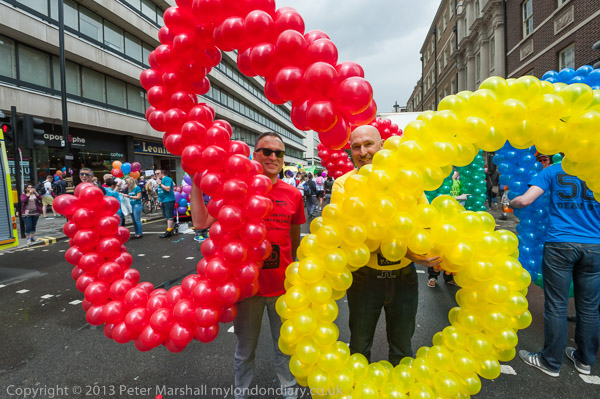
After this I decided not to cover Pride in 2018, going instead to photograph a march against the closure of acute facilities at Epsom and St Helier Hospitals in south London while it was happening. The following Saturday I went the following week to photograph the third Croydon Pride Procession, a much smaller and friendlier event.
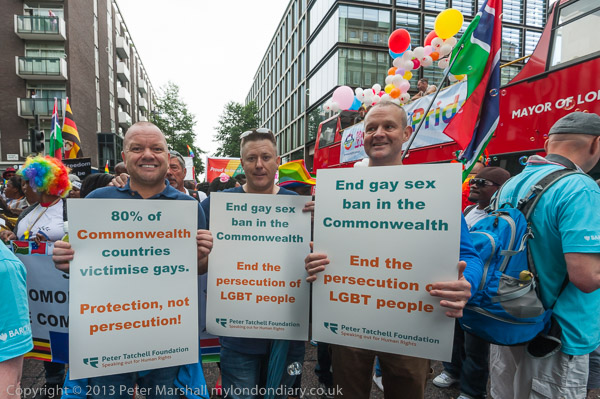
In 2019 I went to Regent’s Park where people were preparing to join on the end of the huge Pride Parade as a Queer Liberation March in protest against the increasing corporate nature of Pride.
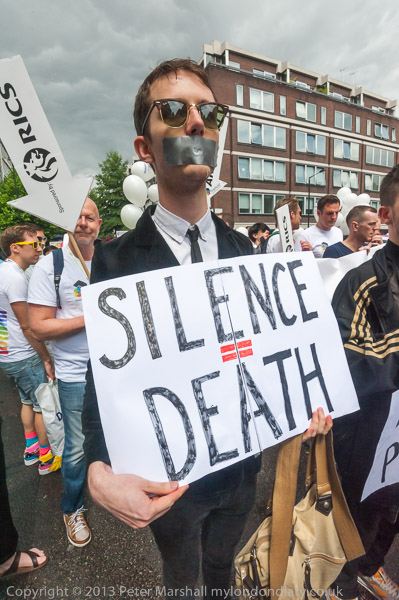
They included some LGBT groups unable to afford the fees to take part in the official parade, but mostly people were there because they felt it vital to get back closer to the origins of Pride, which began with the Stonewall riots 50 years ago led by trans women of colour.
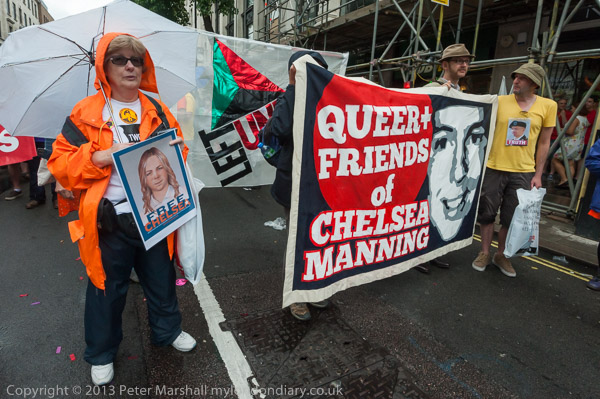
I had to leave well before they set off to join the parade. The did eventually manage to do so, but had to force their way past the Pride stewards. The police had initially tried to stop them but then decided they had to be allowed to march.
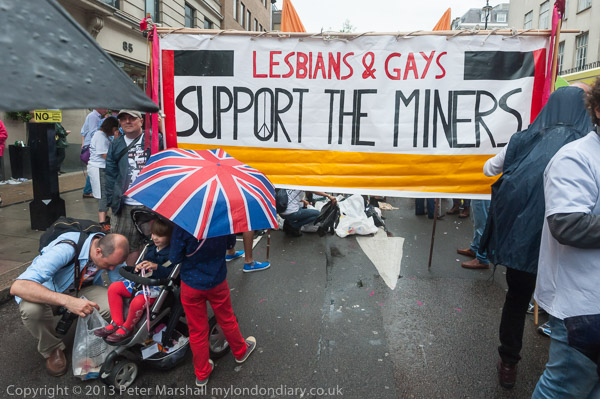
Pride was cancelled in both 2020 and 2021. On July 1st 2022 I photographed the Gay Liberation Front UK commemorating their first London Gay Pride March 50 years ago marching through London on exactly the same hour and date. London Pride 2022 took place the following day but I went elsewhere.
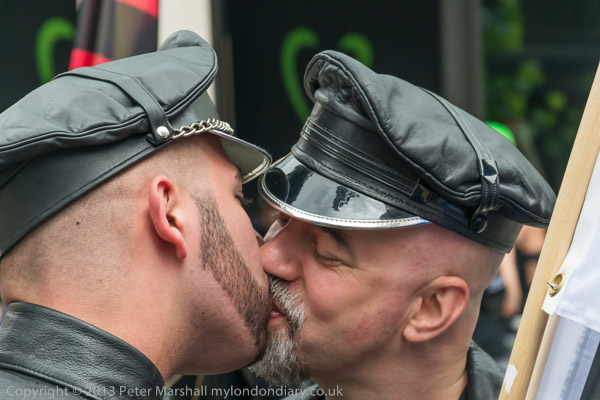
More pictures from Pride 2014 on My London Diary at Rain on Pride Parade.
